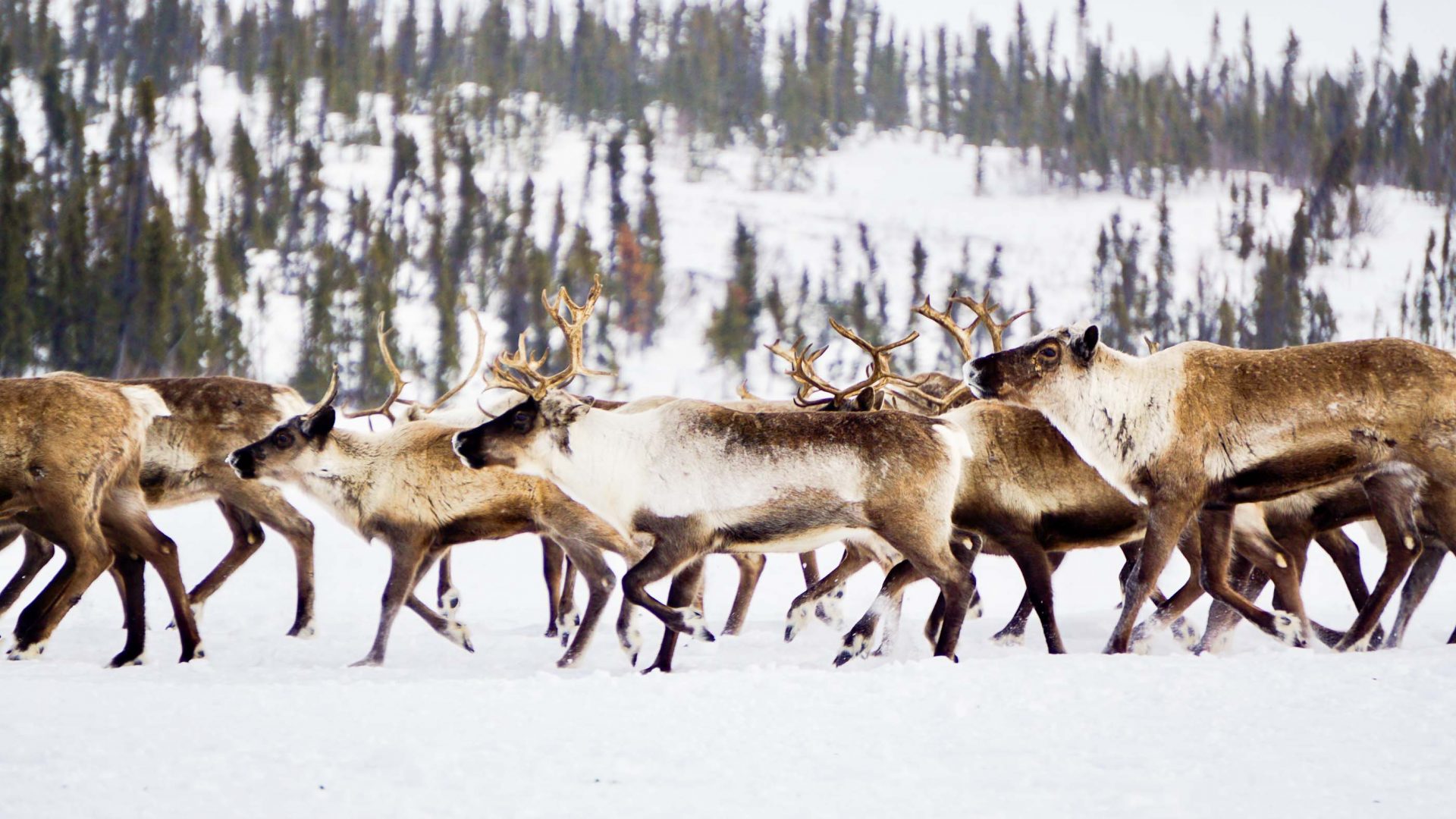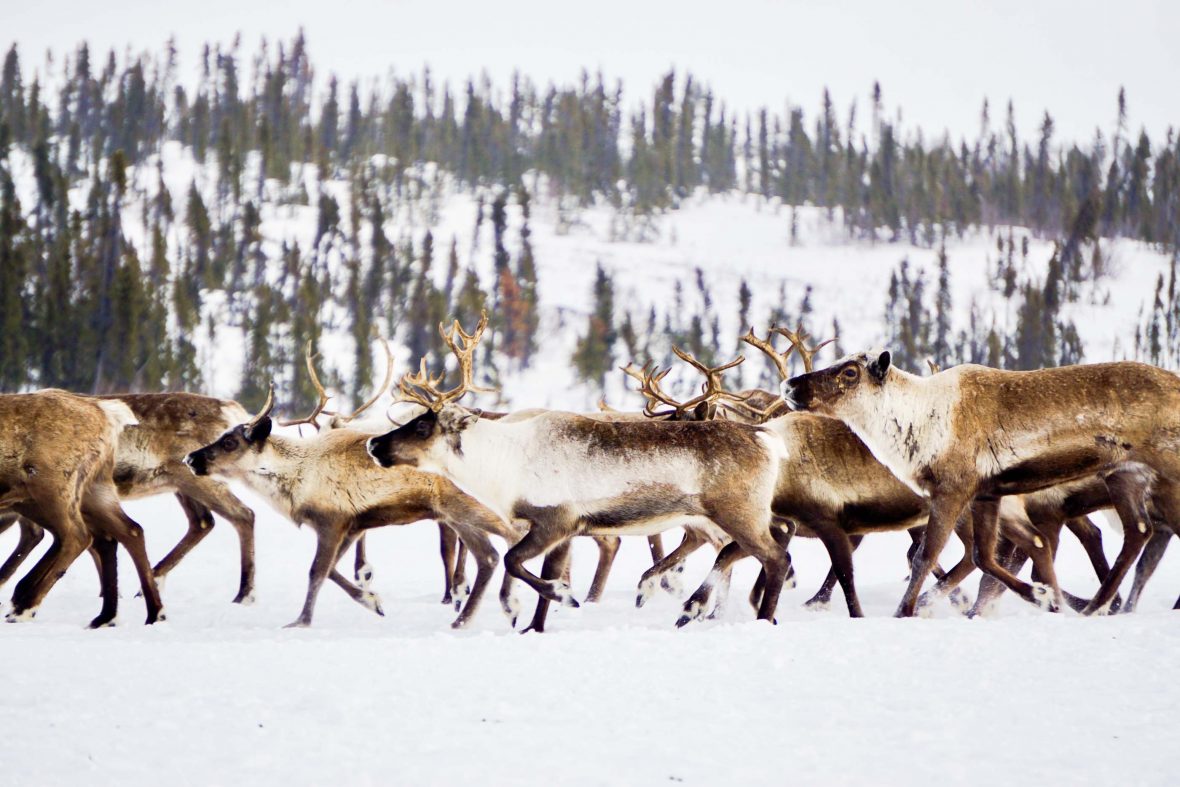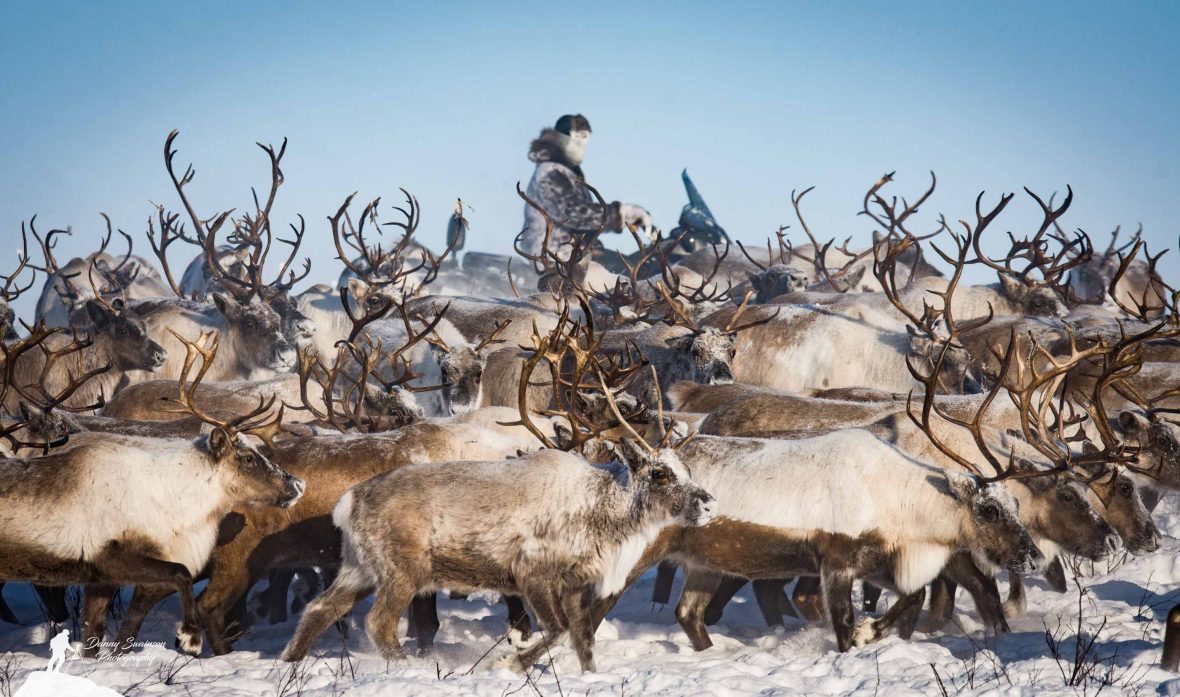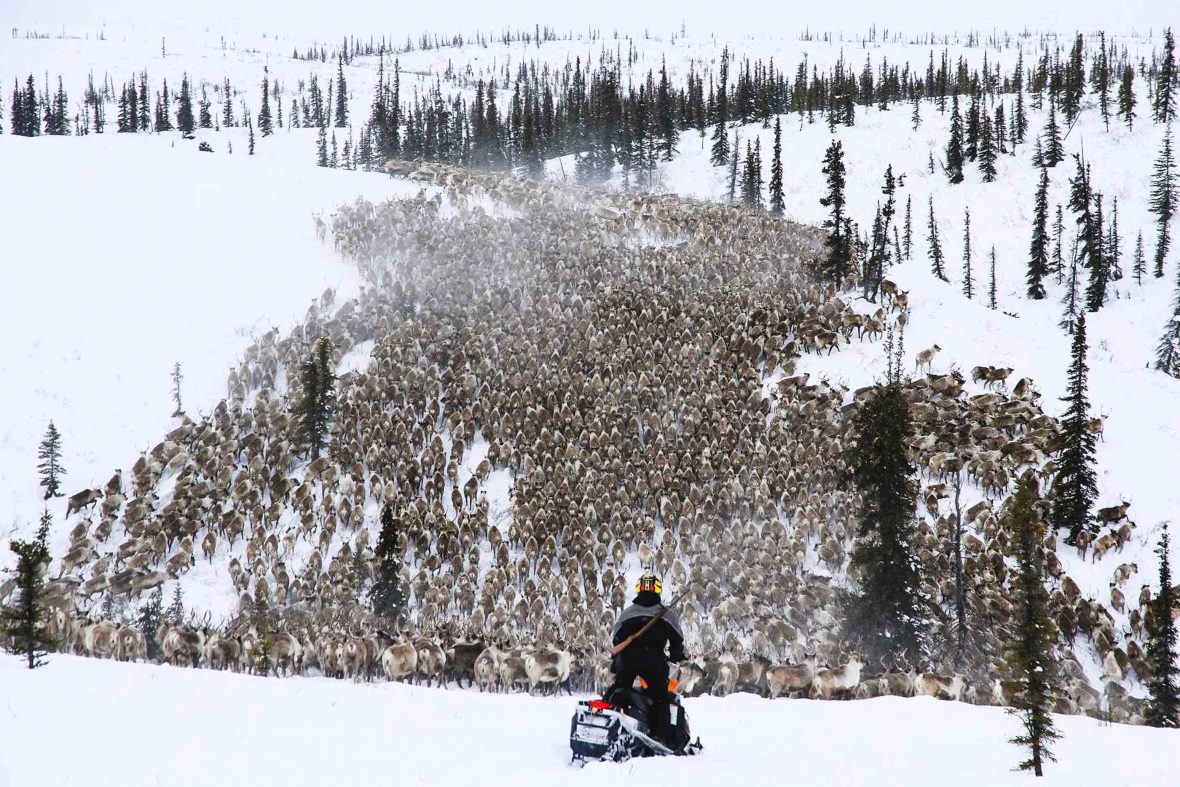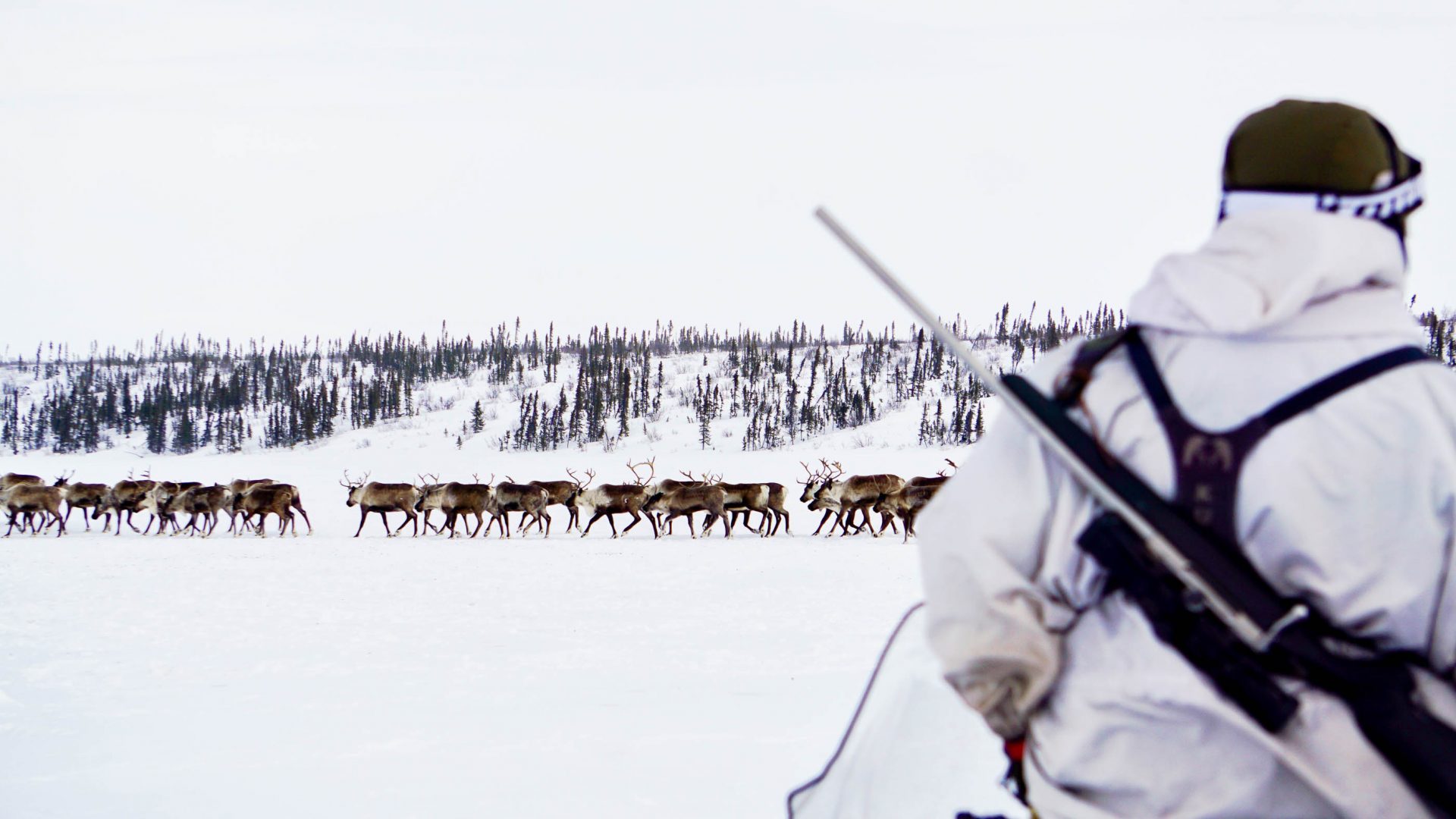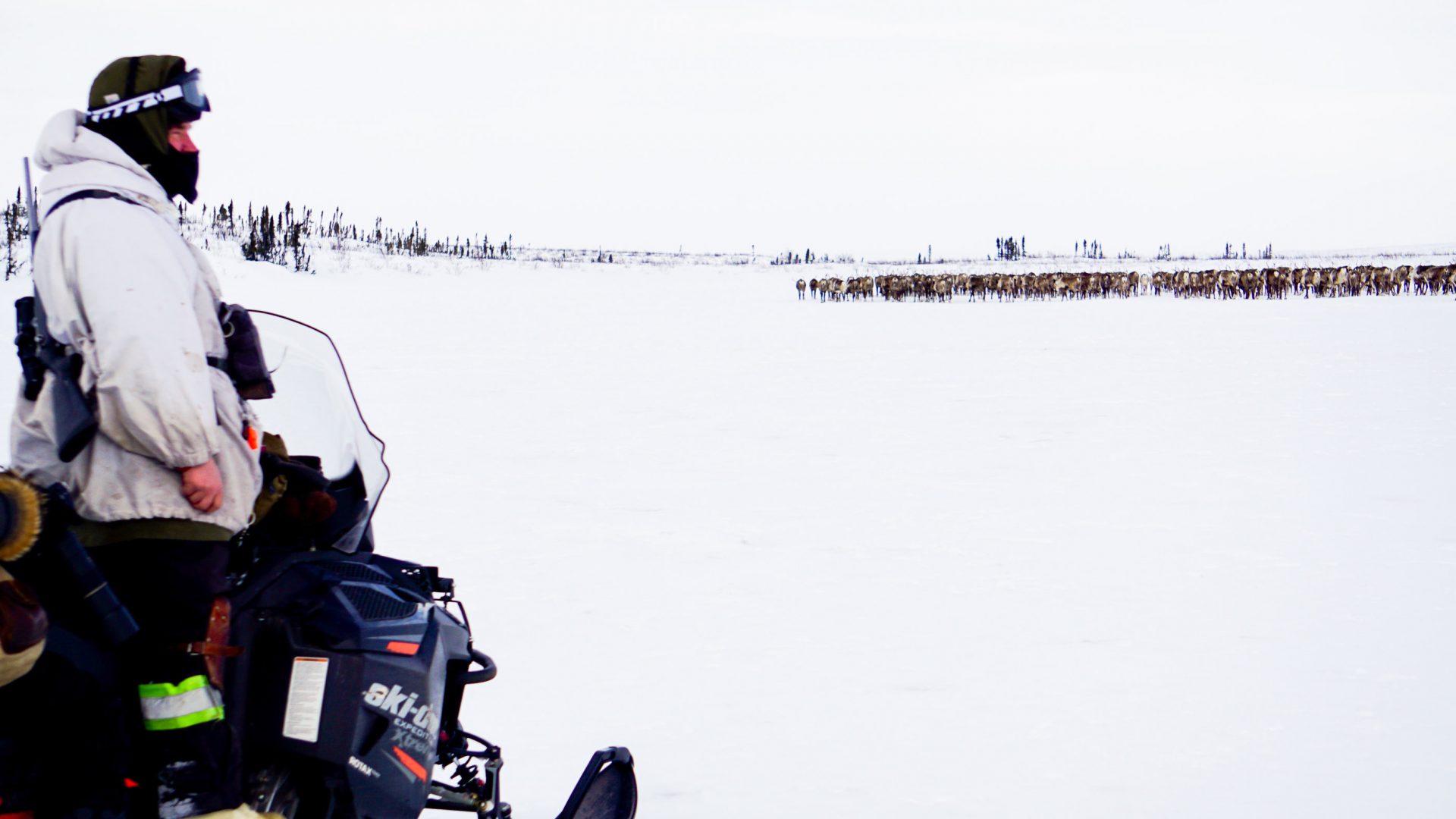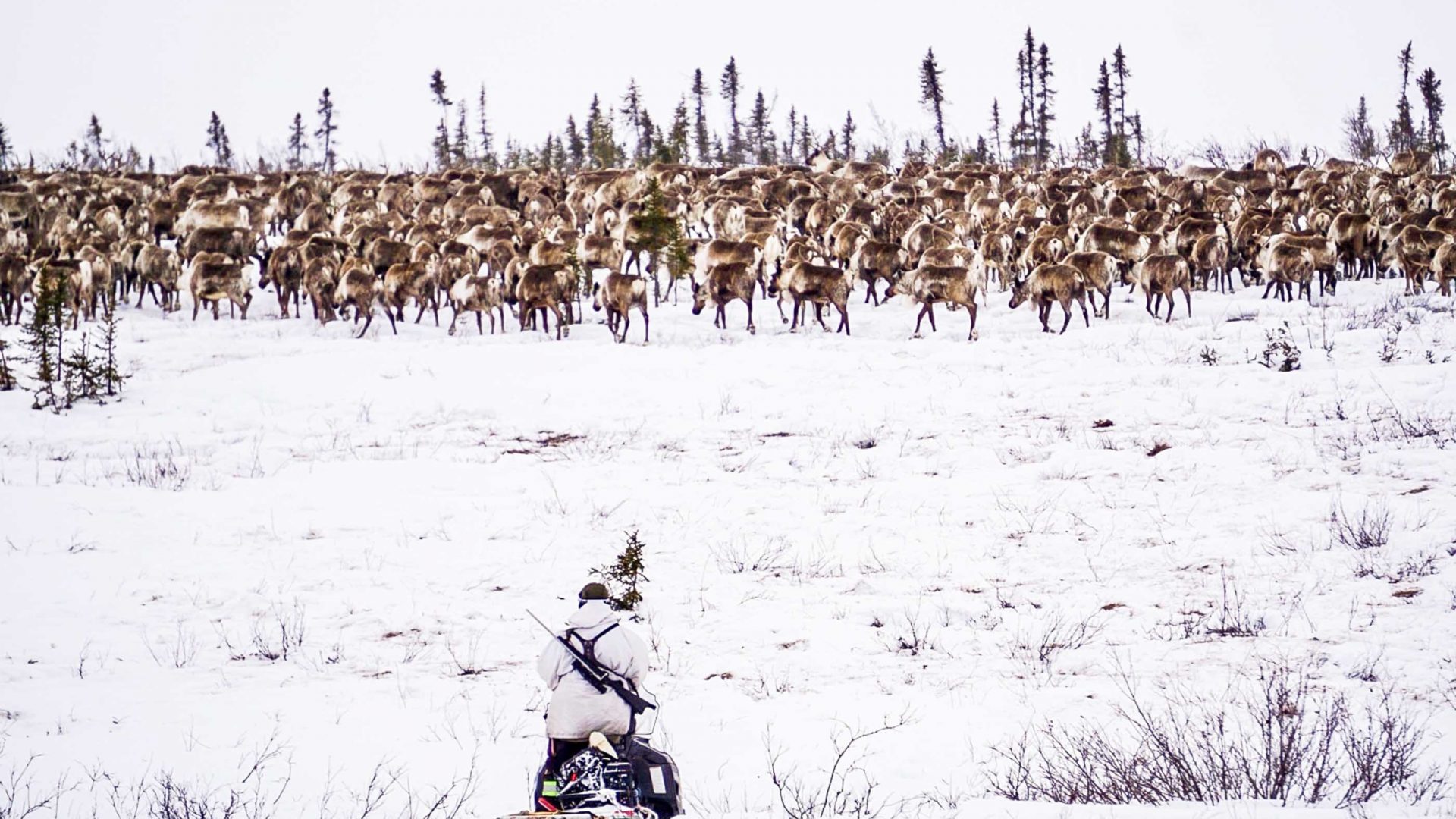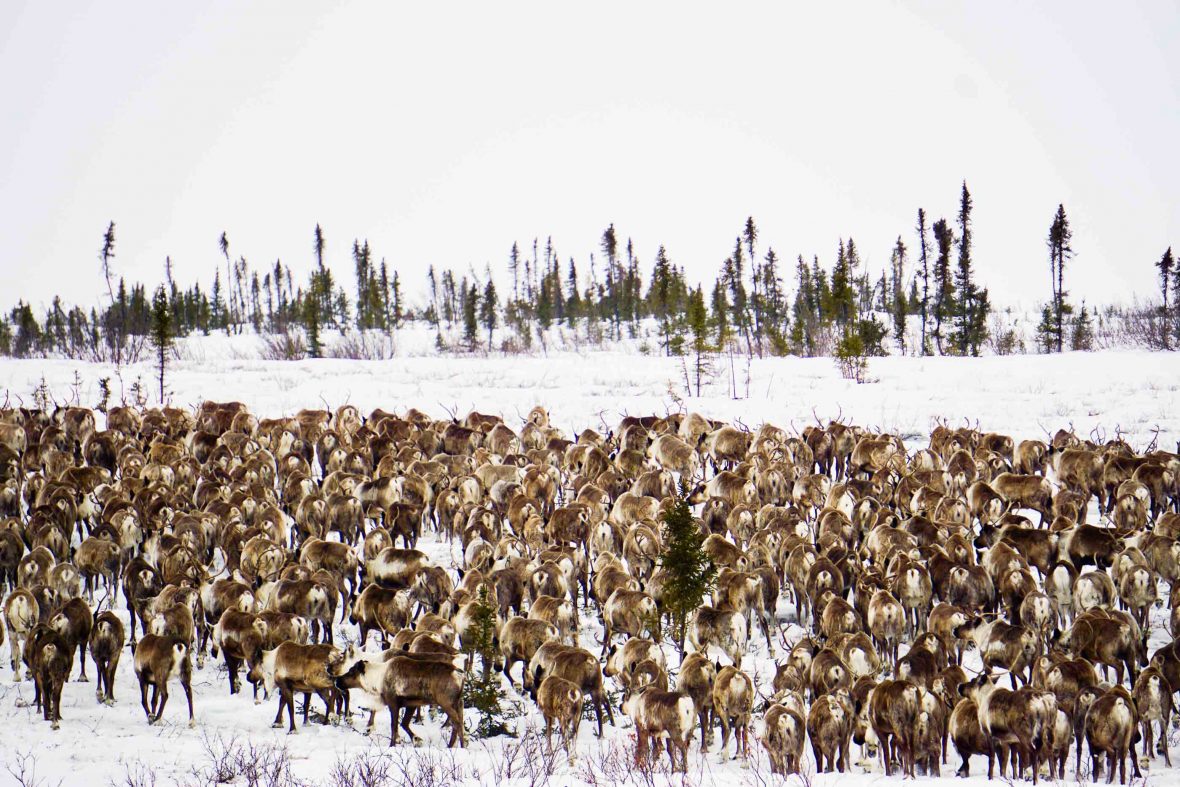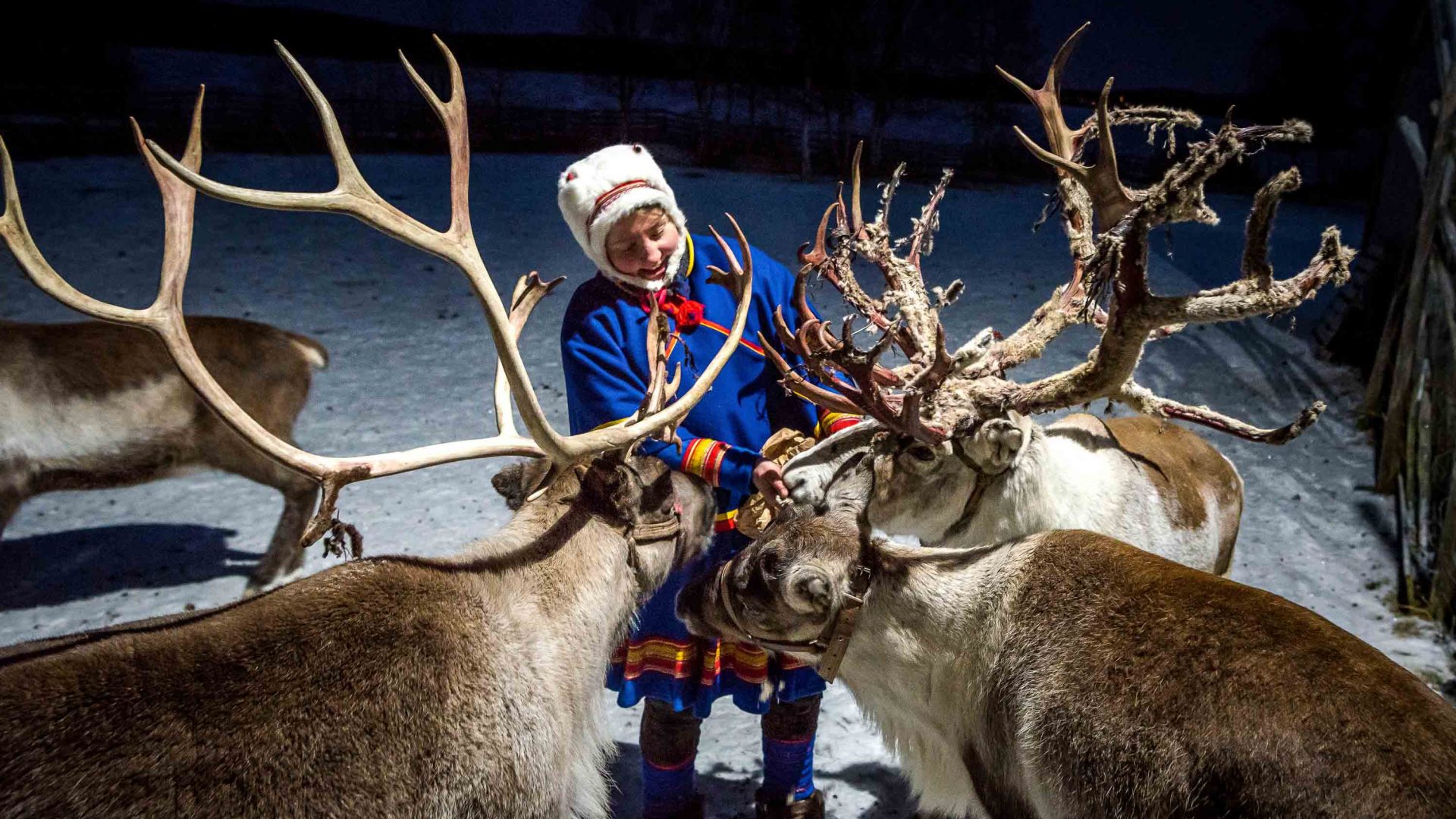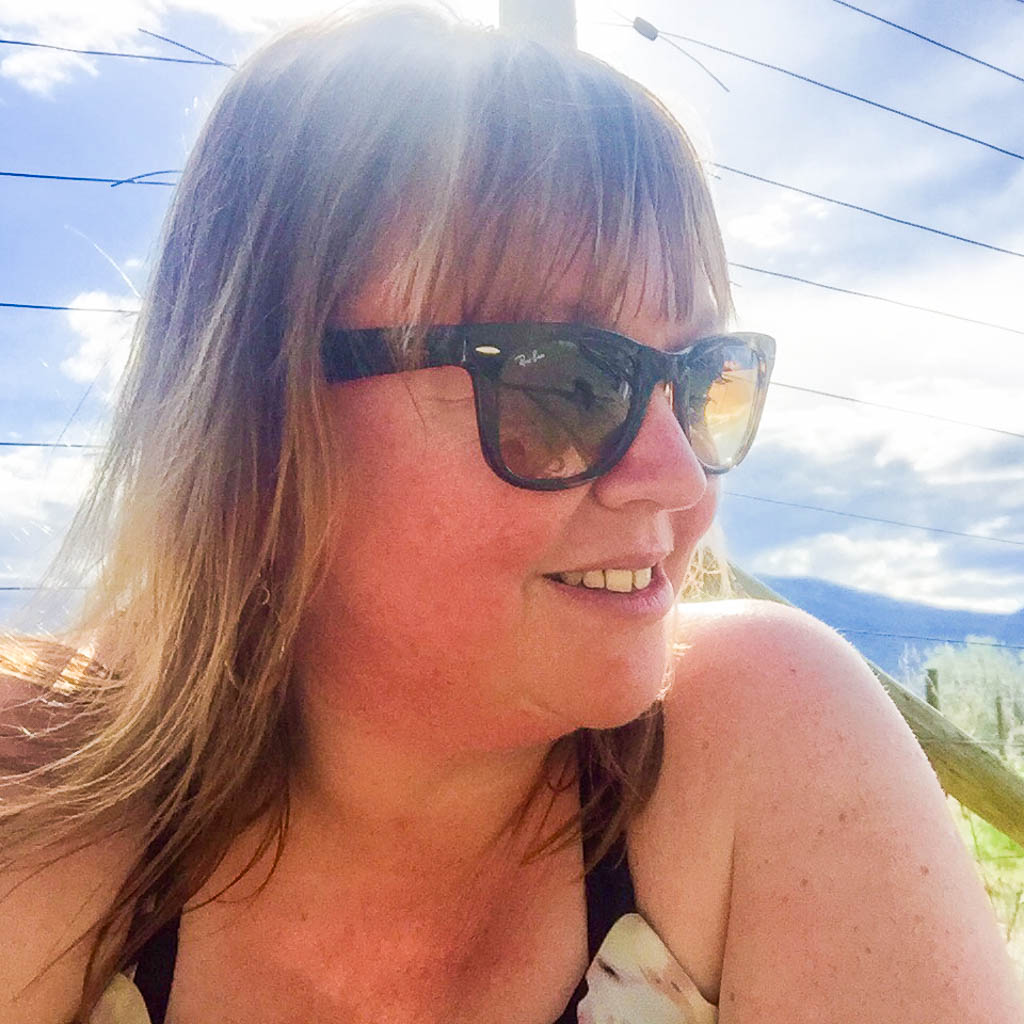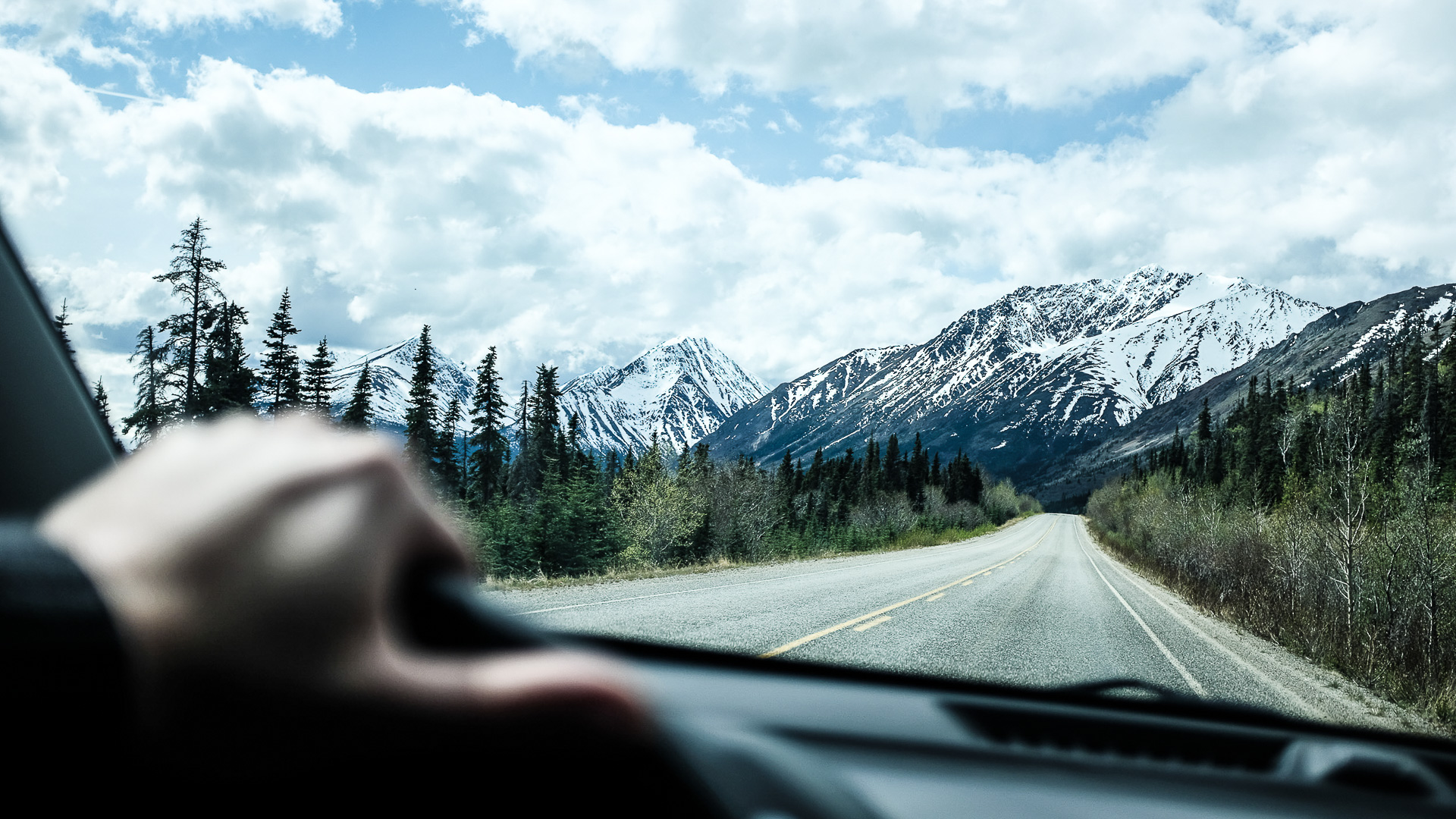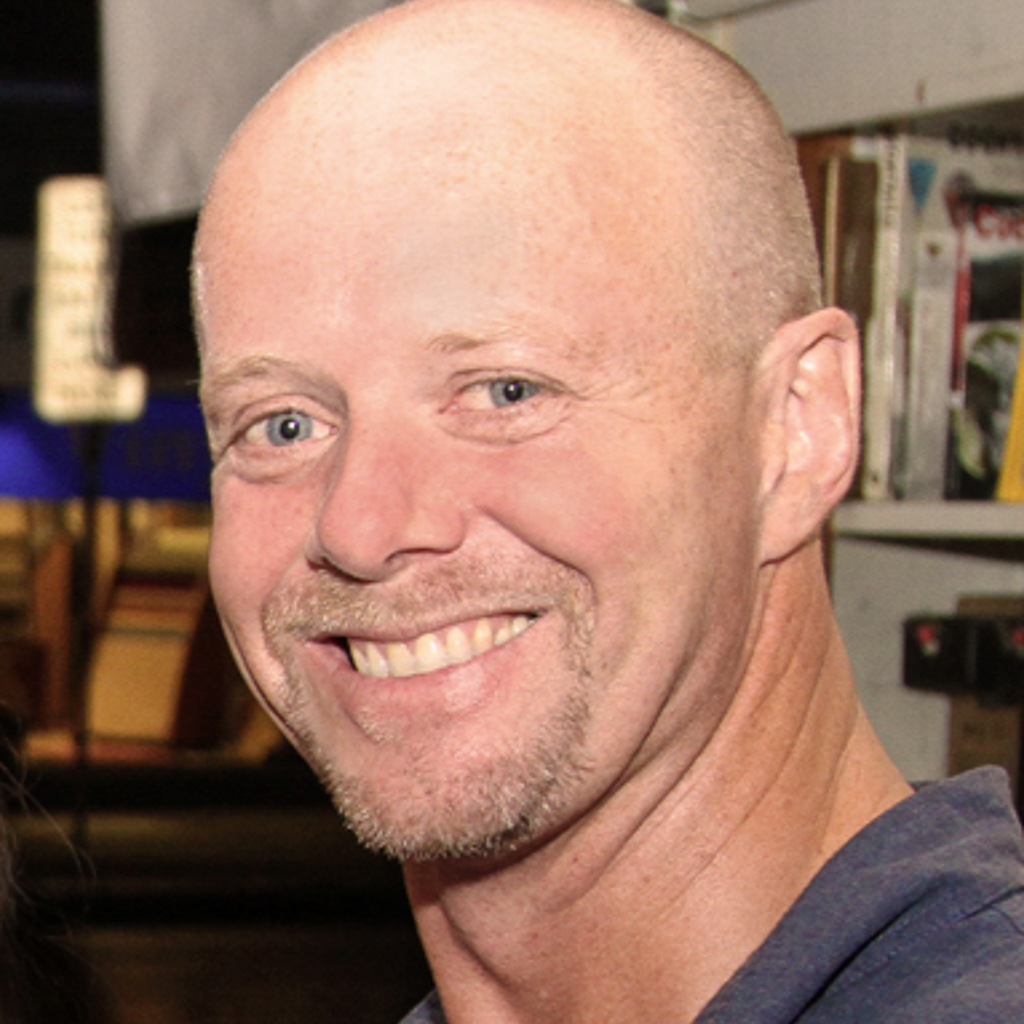
Editor’s note: This article was published before the coronavirus pandemic, and may not reflect the current situation on the ground.
Ninety years ago, a 3,000-strong herd of reindeer led by a Sámi herder, made a five-year-long journey to Canada to replace declining caribou. What the government had hoped would be a solution to food scarcity was not so simple, finds Karen Gardiner.
Through swirling snow, I can barely pick out the reindeer. To my eyes, streaming from bitter cold, they’re scarcely distinguishable from the dwarf birch and stunted spruce that, bent by the Arctic elements, are strewn across the snow-blanketed tundra. Tony Lalong, the herder who my small group followed here, signals to us that we may move forward, a little, on our Ski-Doos. Gently, though, so we don’t startle the skittish creatures.
We’re in the far north of Canada’s Northwest Territories, a remote landscape in the Canadian Arctic. Our guide, from Inuit-owned Tundra North Tours has driven us up from Inuvik, Canada’s largest community north of the Arctic Circle, and far off the highway that runs through the eastern channel of the Mackenzie Delta. From here, we ride our Ski-Doos onto the winter grazing grounds of Canada’s only reindeer herd.
We creep to around a hundred feet’s distance, from where I can hear their snuffling and see their warm breath in the frosty air. Hundreds of reindeer, huddled close despite the vast range at their disposal. But if these creatures seem to lack the wildness of this place, it’s because they’re not from here.
Almost a century ago, the Inuvialuit (western Canadian Inuit) of the Mackenzie Delta were facing a problem. Caribou (native to North America), on which the Inuvialuit depended on for food, were getting scarce. Looking across the border, the Canadian government saw a solution.
RELATED: In photos: Following the footsteps of Sweden’s reindeer herders
In Alaska, in the late 1800s, two herds of reindeer—the smaller, domesticated European/Asian relative of the wild North American caribou—were brought from Siberia in response to declining wildlife numbers. Their arrival not only kept locals fed, it led to a booming reindeer meat business: Between 1918 and 1925, over 900,000 kilograms were shipped to the US mainland.
Could this work in Canada? The Canadian government surveyed the land along the Arctic coast and decided to replicate the Alaskan project in the Mackenzie Delta. But their project had an ulterior motive.
Much of the herd died along the way, but enough calves were born to make up the numbers. When they finally arrived, the government hoped Bahr and three other Sámi herders brought over from Norway would help train local Inuvialuit, who would enthusiastically take up reindeer herding.
But that lifestyle did not appeal to the communities in which hunting had long been the way of life. “Why would I spend all my time looking after reindeer when nature can do that for me?” Kisoun Taylor recalls his grandfather asking him.
Although reindeer husbandry never quite took off in the way it was hoped, the descendants of the original herd, now numbering around 1,500, still graze around the Mackenzie Delta. The herd has survived and occasionally thrived—when their antlers provided velvet to a once-booming Chinese market for aphrodisiacs and health supplements, it grew as large as 18,000.
Kisoun Taylor tells me that he tries to time his reindeer tours for when Lalong has work to do. “When he has to move the herd, he waits until we show up with our tourists so that we’re not moving them for no reason,” he says. “We’re helping him get his job done and he’s helping us have a good experience.”
RELATED: Cargo cruising deep into Canada’s French First Nations territory
The herd’s current owner is elderly and there seems to be little interest from anyone in purchasing it from him. Including the herd in their tour packages could be a way to help ensure its survival. Tourism has the potential to show that these reindeer are worth protecting, and he points out that visitors can now check off several classic Arctic experiences in one trip.
You can walk on the frozen Arctic Ocean, drive on an ice road, sleep in an igloo, and herd reindeer. As there’s no other reindeer tourism experience available in North America, you’d otherwise have to go to two different continents to do all that.
